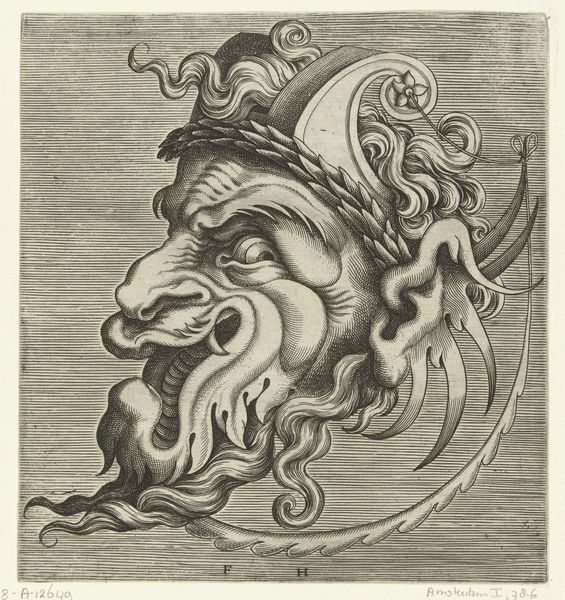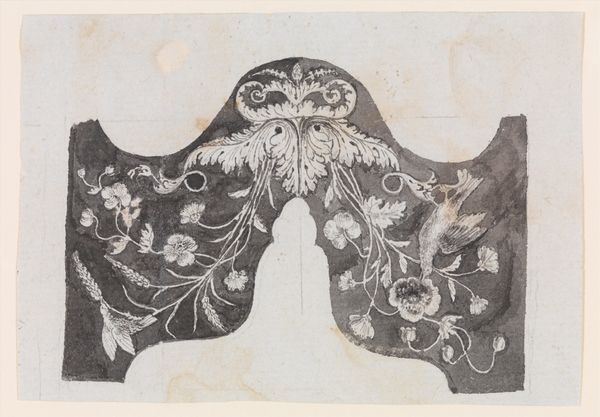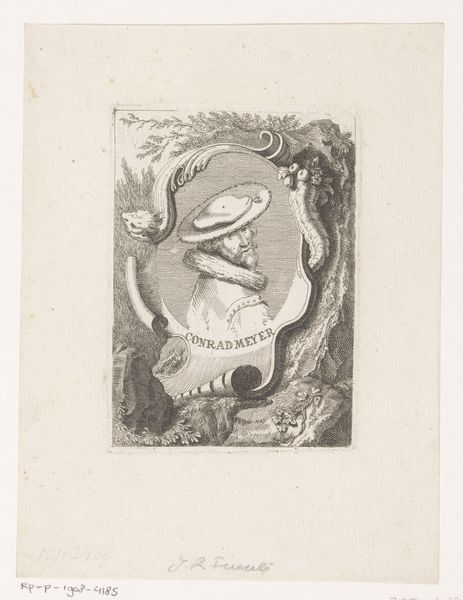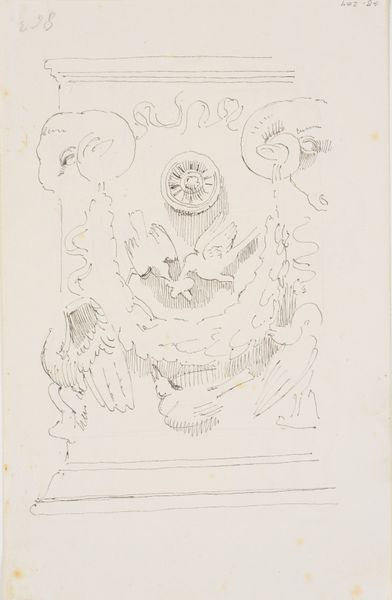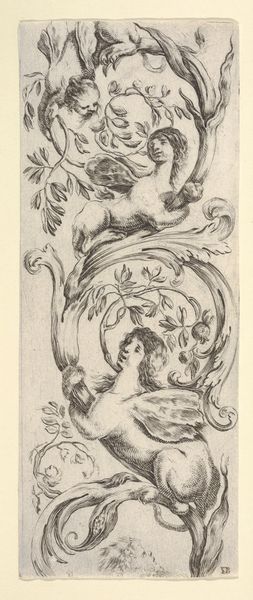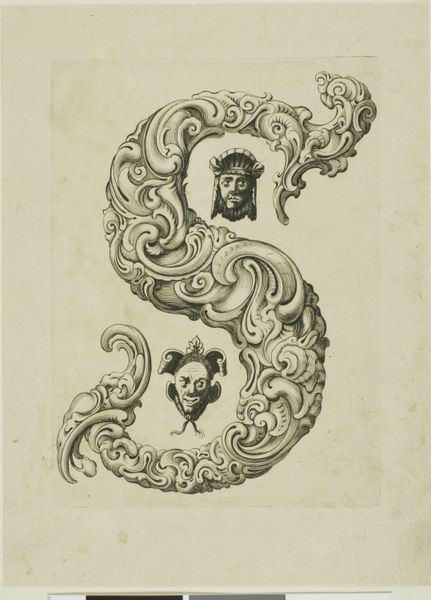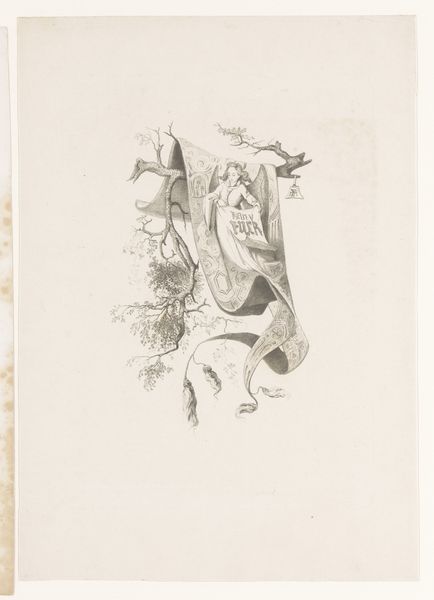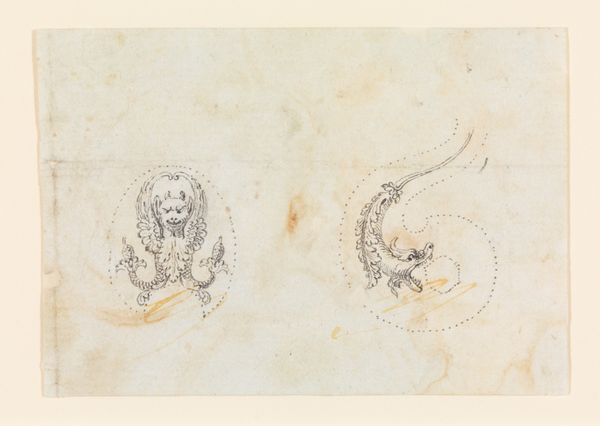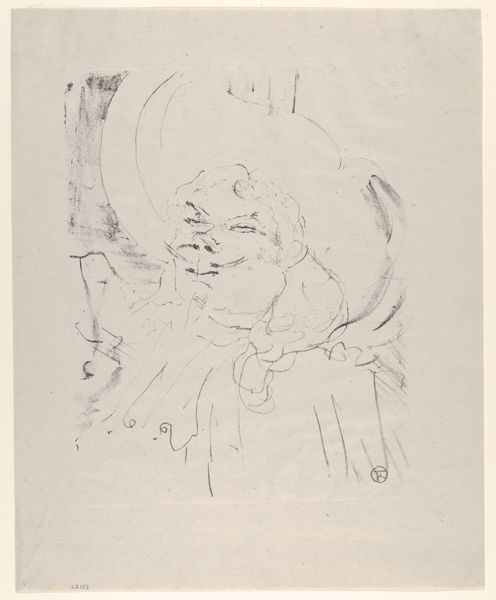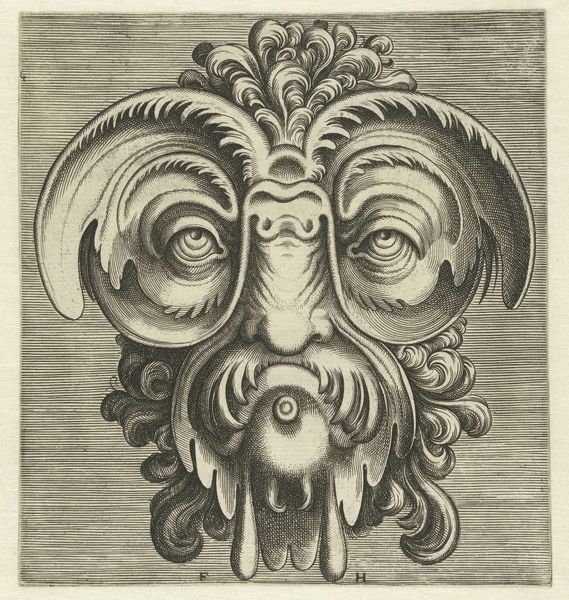
Study for a bronze name plate for Edward D. Adams 1887 - 1897
0:00
0:00
drawing, print, watercolor, pencil
#
portrait
#
drawing
# print
#
11_renaissance
#
watercolor
#
pencil
#
pencil work
Dimensions: Sheet: 6 7/8 in. × 6 in. (17.5 × 15.3 cm)
Copyright: Public Domain
Editor: This is Alphonse Legros’s "Study for a bronze name plate for Edward D. Adams," created between 1887 and 1897. It’s a pencil and watercolor drawing. It strikes me as classically inspired, almost like something you’d see on an ancient building, but what's your take on this? Curator: The “ancient” quality is no accident. Legros was deeply engaged with artistic traditions, including classical ones. Think about how nameplates like this functioned then and now: asserting identity, proclaiming status. Legros is working within a specific context of 19th-century monumentality. Consider Adams; What did it mean to immortalize someone’s name in bronze like this, in that time? Editor: So, it’s about creating a legacy? Making sure Adams is remembered? Curator: Precisely. And how is Legros achieving that? Look at the face, the ornate detail. He’s invoking power, permanence, tradition. Nameplates, then and now, act as tools of social memory. Bronze itself signifies importance and longevity, tying back to earlier European portrait traditions and ideals of commemorating achievement. Editor: That’s a really interesting perspective. I hadn't thought about the bronze itself as a signifier. So this isn't just art; it’s about public memory and reinforcing a certain social hierarchy. Curator: Exactly! How is Legros reflecting on Edward’s personal impact, considering their cultural environment and, particularly, how it reflects on the culture in general. How are leaders honored or remembered today? Editor: I definitely see that connection now. I'll think about what monuments we have on display and their real world function now.
Comments
No comments
Be the first to comment and join the conversation on the ultimate creative platform.
